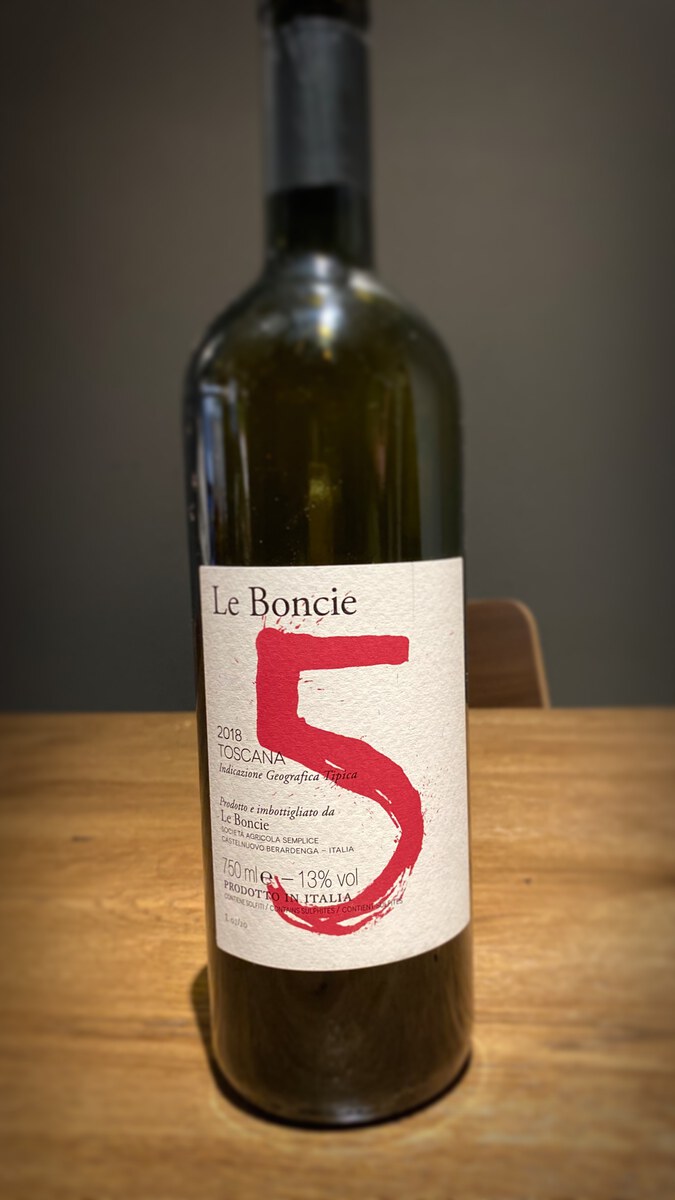Podere Le Boncie "5" 2018
Blend of Sangiovese / Mammolo / Foglia Tonda / ColorinoEvolved and elegant. Leather, wet stone, graphite.
Tasting Notes
The 2018 5 from Podere Le Boncie is ruby colour with garnet hues.
On the nose it comes across as a round, more-aged Tuscan blend with notes of leather, graphite and wet stone.
The mouthfeel is light and round. The finish is elegant and long.
This is an incredibly pleasant wine, very easy to drink! Podere Le Boncie 5 is a great option when looking for a bottle that has a good degree of evolution despite the young age.

|
|
Podere Le Boncie |
|
|
5 |
|
|
Red & Still |
|
|
Italy |
|
|
Toscana, Chianti |
|
|
Sangiovese, Mammolo, Foglia Tonda, Colorino |
|
|
2018 |
|
|
Learn more
Sangiovese
Wine making grape
Sangiovese is a red Italian wine grape variety named after the Latin sanguis Jovis, which means “Jupiter’s blood.” Though it is native to most of central Italy, from Romagna to Lazio, Campania, and Sicily, it is best known outside of Italy as the sole component of Brunello di Montalcino and Rosso di Montalcino, as well as the primary component of the blends Chianti, Carmignano, Vino Nobile di Montepulciano, and Morellino di Scansano, though it can also be used to make varietal wines like Sangiovese di Romagna
Link to here... | Derived from 'Sangiovese' on WikipediaMammolo
Varietal
Mammolo is an Italian red wine grape grown mainly in Tuscany. Mammolo was typically used in blended Sangiovese-based Chianti wines, where it contributed a distinct violet or mammole aroma. Its use has been decreasing. Mammolo can also be found in the Vino Nobile di Montepulciano region of Tuscany and scattered vineyards throughout Central Italy, in addition to small plantings in the Chianti district.
Link to here... | Derived from 'Mammolo' on WikipediaColorino
Varietal
In Tuscany, the Colorino grape variety is the most commonly grown. The grape is noted for its dark color and is commonly used as a coloring agent in red blends. Because of its obsession with and use of the governo winemaking method, it played a minor role in Chianti’s history. Colorino, like Canaiolo, did not rot easily when partially dried before being added to fermenting grape must. The grape, however, did not have the same amount of fruit or softening effect as Canaiolo, and it fell out of favor. Tuscan winemakers became more involved in the variety in the late 1980s, seeing parallels between it and the part Petit Verdot plays in Bordeaux blends. Colorino was planted to provide darker colors and structure from phenolic compounds in the thick skin of the grape, but without the overpowering aromatics of Cabernet Sauvignon. The resurgence of Colorino was short-lived, and by the turn of the century, it had returned to a minor position in Tuscan wines.
Link to here... | Derived from 'Colorino' on Wikipedia
